Collection Home
![]()
Version A
Version B
Version C
Version D
|
|
|
|
|
| Version A | Version B | Version C | Version D |
[ Top | Version B | Version C | Version D | Return to Racks ]
|
|
|
|
|
| Front View | Rear View | Side View | Open for Rigging |
I acquired this rack from Vertical (Вертикаль) via Artyom Babin (Артём Бабин) in 2022.
This rack is 227 mm. tall, 71 mm. wide, 18 mm. thick, and weighs 540 g. The frame is made from 8 mm. plated steel bent into a U, with an internal width of 25 mm. There are four solid steel brake bars, one of which is an inverted hyperbar. The bars are 18 mm. in diameter. The standard bars are 50 mm. long and the hyperbar is 71 mm. long. All bars are painted. The white bars in positions one and three are drilled but not slotted, while the other two are cut to allow opening for rigging. Allowing 35 mm. for the rope leaves 87 mm. for spreading the bars. The bars are held in place by two threaded and double pinned posts.
The hyperbar has the Vertical logo and "VERTICAL" printed on the long end.
The opening bars swing freely rather than clicking closed on the frame. This is a nuisance for packing and may be create safety issues if one foolishly tries to hand-feed the rope through this rack.
The inverted hyperbar that is used for tying off, but I would much rather see a top hyperbar for increasing friction on rappel. Worse, the hyperbar is an opening bar, and forces on the end with the hyperbar can easily force the bar open when one isn't interested in having that happen.
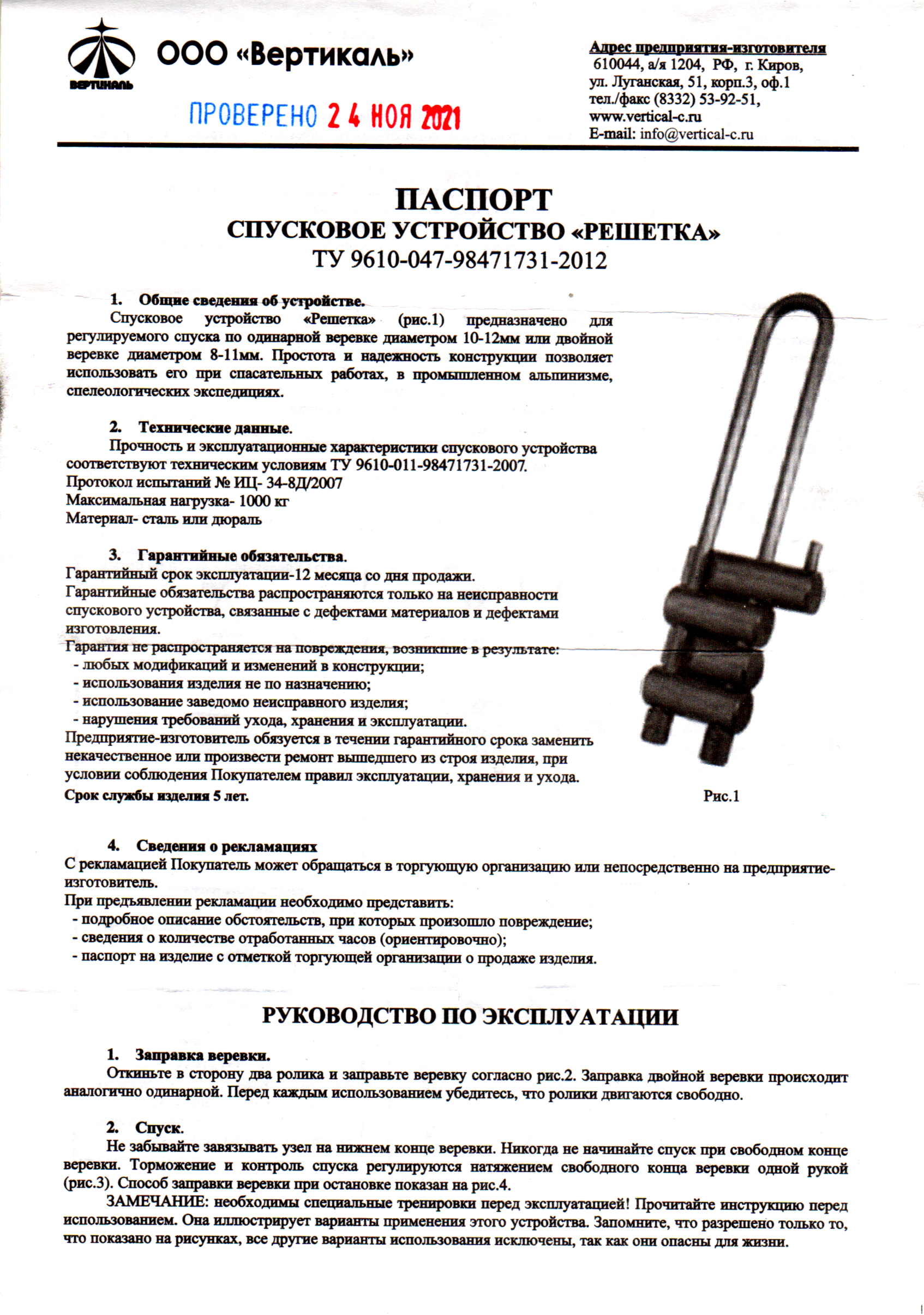 |
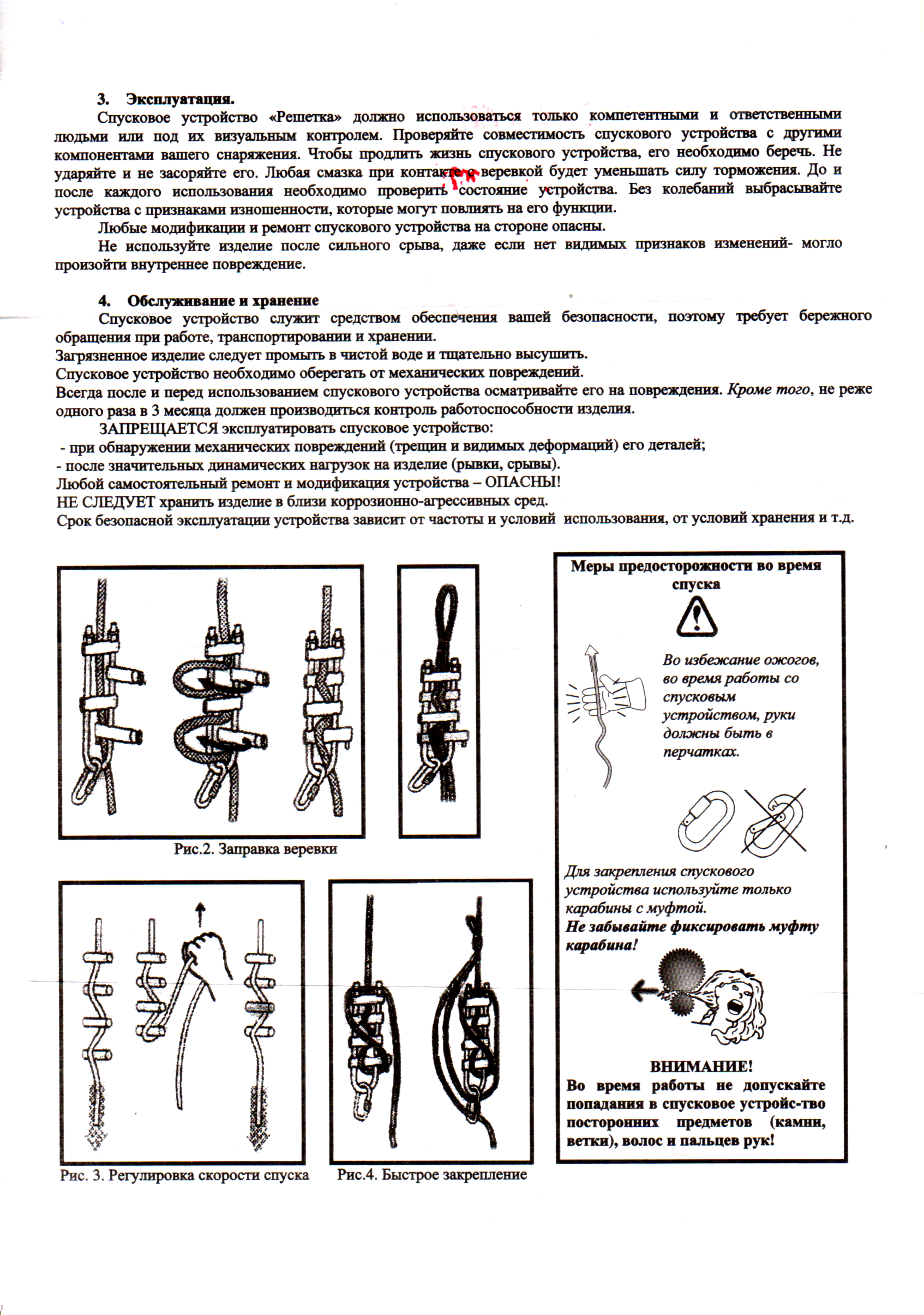 |
[ Top | Version A | Version C | Version D | Return to Racks ]
|
|
|
|
|
| Front View | Rear View | Side View | Open for Rigging |
I acquired this rack from Vertical (Вертикаль) via Artyom Babin (Артём Бабин) in 2022.
This rack is 229 mm. tall, 70 mm. wide, 18 mm. thick, and weighs 331 g. The frame is made from 8 mm. plated steel bent into a U, with an internal width of 25 mm. There are four solid aluminum brake bars, one of which is an inverted hyperbar. The bars are 18 mm. in diameter. The standard bars are 50 mm. long and the hyperbar is 70 mm. long. The unfinished bars in positions one and three are drilled but not slotted, while the other two are cut to allow opening for rigging and painted orange. Allowing 35 mm. for the rope leaves 86 mm. for spreading the bars. The bars are held in place by two threaded and double pinned posts.
The hyperbar has the Vertical logo and "VERTICAL" printed on the long end.
The opening bars swing freely rather than clicking closed on the frame. This is a nuisance for packing and may be create safety issues if one foolishly tries to hand-feed the rope through this rack.
The inverted hyperbar that is used for tying off, but I would much rather see a top hyperbar for increasing friction on rappel. Worse, the hyperbar is an opening bar, and forces on the end with the hyperbar can easily force the bar open when one isn't interested in having that happen.
Switching to aluminum bars reduces the weight of this rack nearly 40 percent compared to model ver 0301. Aluminum bars also have better thermal conductivity, and they will not rust. I see no reason why someone would prefer the heavier steel bars. Although steel bars wear better, that hardly justifies the extra weight.
 |
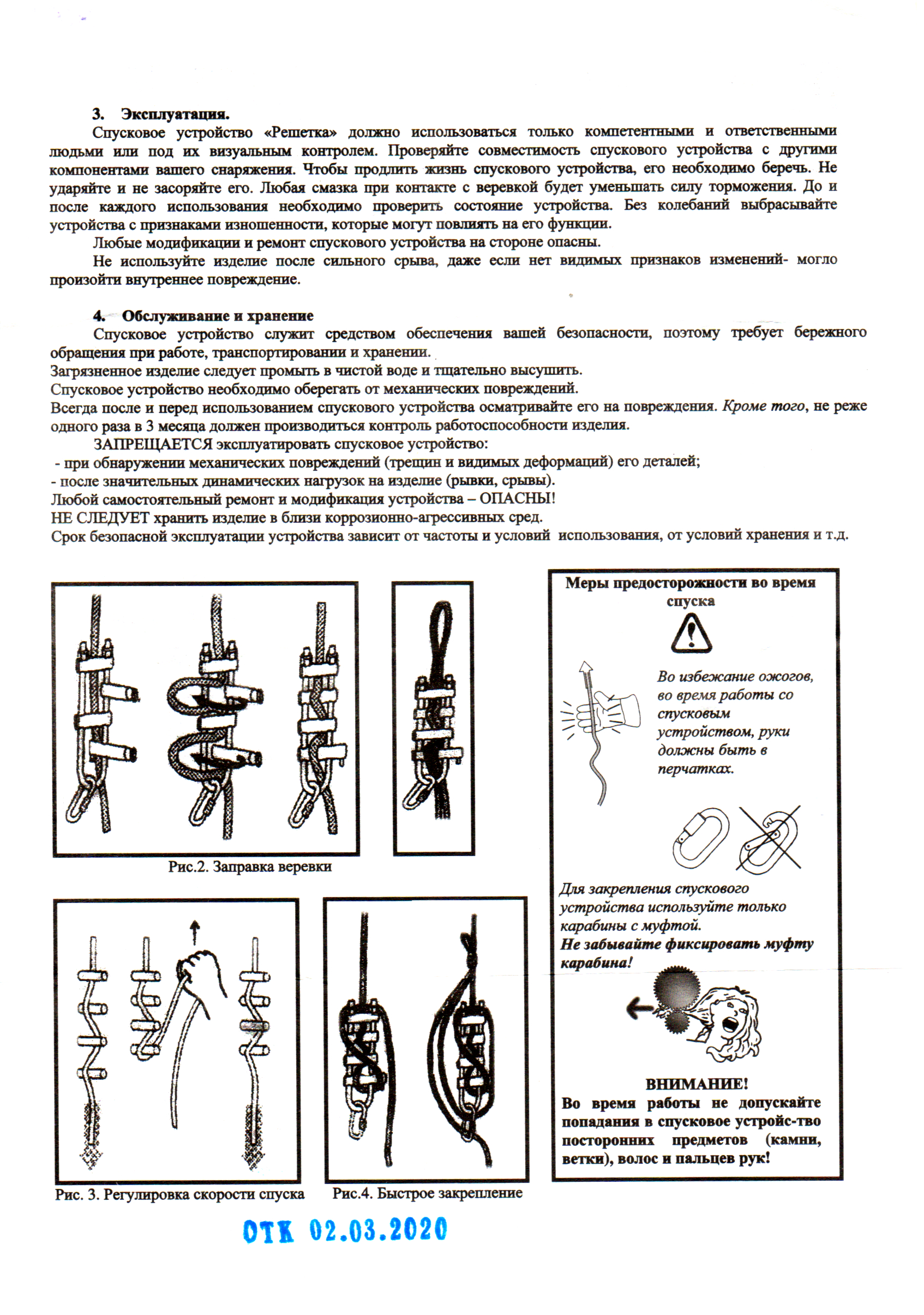 |
[ Top | Version A | Version B | Version D | Return to Racks ]
|
|
|
|
|
| Front View | Rear View | Side View | Open for Rigging |
I acquired this rack from Vertical (Вертикаль) via Artyom Babin (Артём Бабин) in 2022.
This rack is 228 mm. tall, 70 mm. wide, 18 mm. thick, and weighs 329 g. The frame is made from 8 mm. plated steel bent into a U, with an internal width of 25 mm. There are two hollow steel and two solid aluminum brake bars, one of the latter being an inverted hyperbar. The bars are 18 mm. in diameter. The steel bars are 51 mm. long. the standard aluminum is 50 mm., and the hyperbar is 70 mm. All bars are painted. The black steel bars in positions one and three are drilled but not slotted, while the other two are cut to allow opening for rigging. Allowing 35 mm. for the rope leaves 85 mm. for spreading the bars. The bars are held in place by two threaded and double pinned posts.
The hyperbar has the Vertical logo and "VERTICAL" printed on the long end.
The opening bars swing freely rather than clicking closed on the frame. This is a nuisance for packing and may be create safety issues if one foolishly tries to hand-feed the rope through this rack.
The inverted hyperbar that is used for tying off, but I would much rather see a top hyperbar for increasing friction on rappel. Worse, the hyperbar is an opening bar, and forces on the end with the hyperbar can easily force the bar open when one isn't interested in having that happen.
The hollow tubular bars are comparable in weight to the solid aluminum bars on model ver 0302. Superstitious people who think that black aluminum streaks are bad for their rope may prefer the black paint streaks that these bars will leave, but I don't.
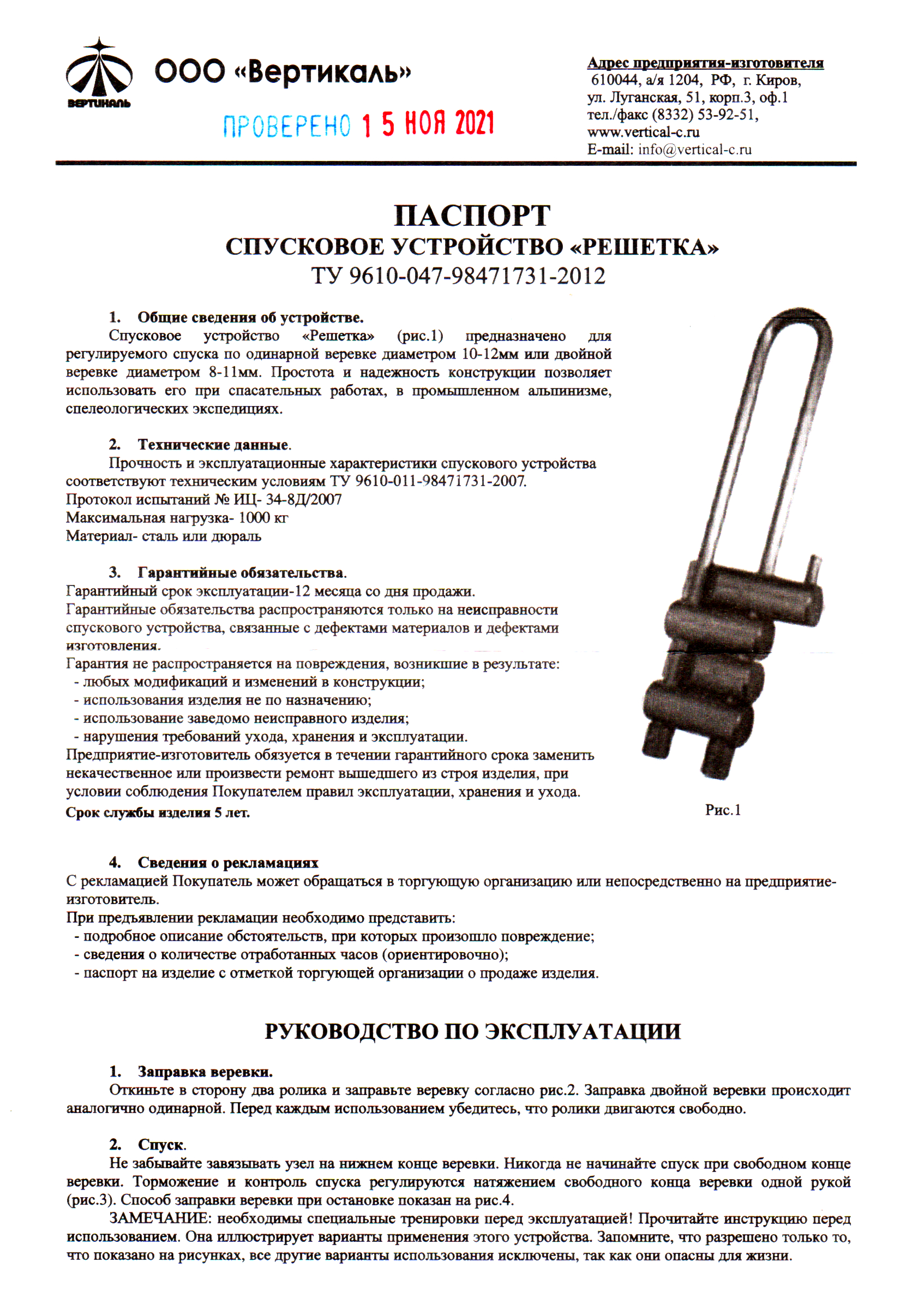 |
 |
[ Top | Version A | Version B | Version C | Return to Racks ]
|
|
|
|
|
| Front View | Rear View | Side View | Open for Rigging |
I acquired this rack from Vertical (Вертикаль) via Artyom Babin (Артём Бабин) in 2022.
This rack is 228 mm. tall, 70 mm. wide, 18 mm. thick, and weighs 355 g. The frame is made from 8 mm. plated steel bent into a U, with an internal width of 25 mm. There are two hollow steel and three solid aluminum brake bars, one of the latter being an inverted hyperbar. The bars are 18 mm. in diameter. The steel bars are 51 mm. long. the standard aluminum is 50 mm., and the hyperbar is 70 mm. All bars are painted. The black steel bars in positions two and four are drilled but not slotted, while the three aluminum bars are cut to allow opening for rigging. Allowing 35 mm. for the rope leaves 68 mm. for spreading the bars. The bars are held in place by two threaded and double pinned posts.
The hyperbar has the Vertical logo and "VERTICAL" printed on the long end.
Model ver 0304 uses the same frame and bars as model ver 0303, but adds a fifth bar at the top, so that the first, third and fifth bars are solid, pivoting bars, while the second and fourth are tubular fixed bars. Having the odd-numbered bars pivot on a U-frame rack is an unusual choice, but it works.
Because of the multiplicative effect adding a bar has on friction (recall the snubbing equation ΔT=e-μθ), the fifth bar considerably improves the performance of this rack compared to the four-bar models.
The down-pointing hyperbar is useless except for tying off, and then it is unnecessary. I see no value to having a hyperbar here. A better choice would have been to provide a standard up-pointing hyperbar on a fixed top bar. If I were to adopt this rack for regular use, I would drill out the four rivets holding the posts in place unthread them, turn the bar stack upside-down, and then reinstall the posts and rivet them back into place. I'm not going to do that. Even if I did, I'd be stuck with a pivoting hyperbar. Forces on the end with the hyperbar can easily force the bar open when one isn't interested in having that happen, and that would be bad.
 |
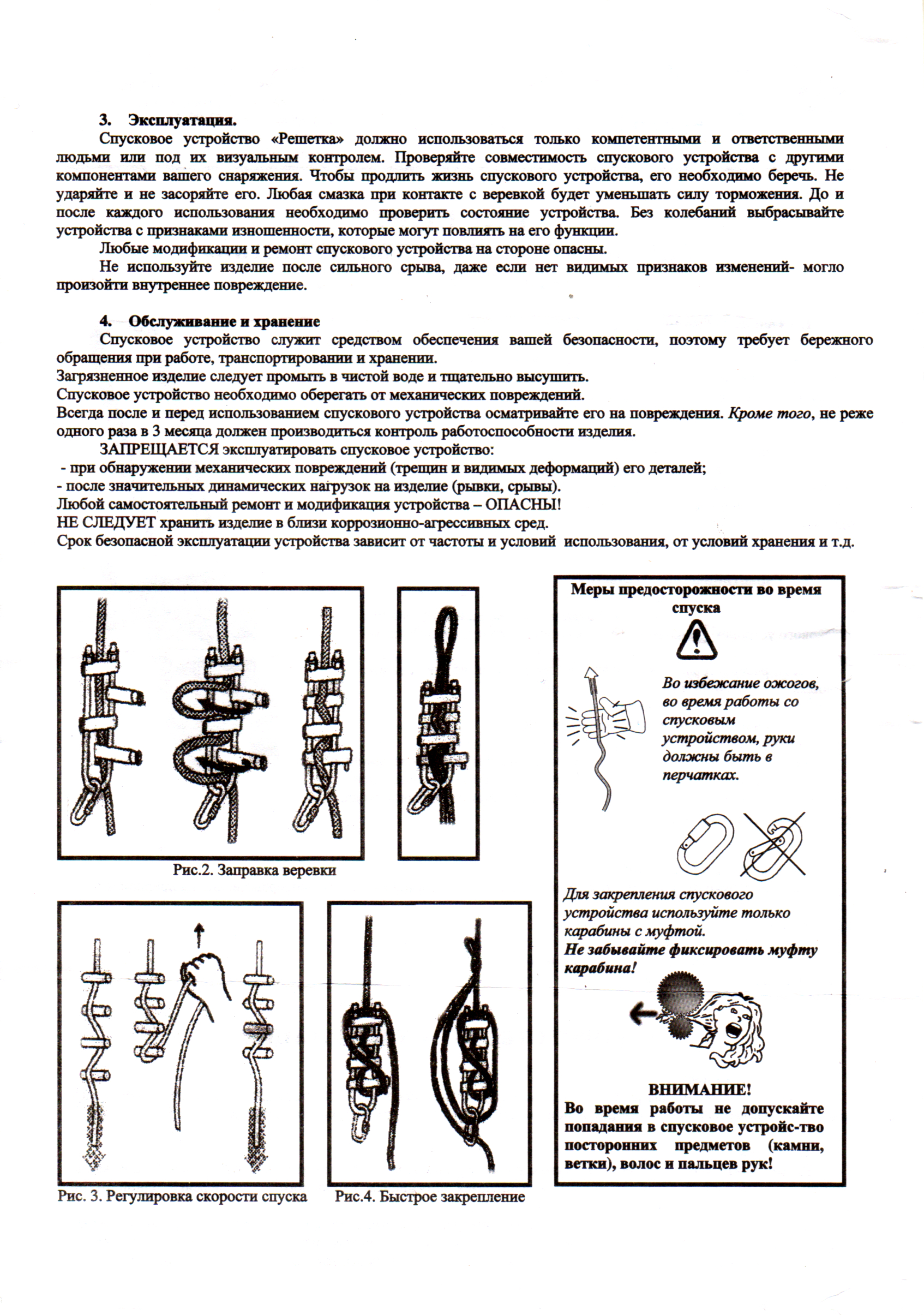 |
[ Top | Version A | Version B | Version C | Version D ]
![]()
For far more content, use a larger monitor and a full-width window.
Hundreds of cell phone users complained and asked me to for a simpler, mobile friendly site. In particular, they wanted me to limit each page to a small number of pictures and minimize my use of text. This new site provides what they asked for.